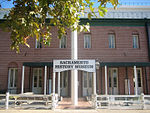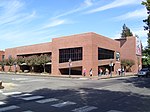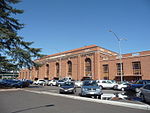PG&E Powerhouse
Beaux-Arts architecture in CaliforniaNational Register of Historic Places in Sacramento, CaliforniaNeoclassical architecture in CaliforniaSacramento, California stubsSacramento Valley Registered Historic Place stubs

PG&E Powerhouse, also known as Sacramento River Station B is a historic building located in Sacramento, California and constructed in 1912 by notable architect Willis Polk. It was used by PG&E as an auxiliary power plant and transformer substation where voltage was transformed for distribution. In 1924, PG&E upgraded the facility, making it the largest steam turbine power plant in the region. They sold the building in 1957 and the inside of the building was stripped of all metal elements and equipment, leaving a large open area. In November 2021, the SMUD Museum of Science and Curiosity (MOSAC) opened on the site as part of a $40.8 million project.
Excerpt from the Wikipedia article PG&E Powerhouse (License: CC BY-SA 3.0, Authors, Images).PG&E Powerhouse
Jibboom Street, Sacramento
Geographical coordinates (GPS) Address Nearby Places Show on map
Geographical coordinates (GPS)
| Latitude | Longitude |
|---|---|
| N 38.593444444444 ° | E -121.50561111111 ° |
Address
SMUD Museum of Science and Curiosity
Jibboom Street 400
95811 Sacramento
California, United States
Open on Google Maps









